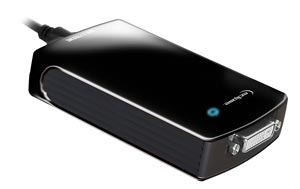An illustrated quick start guide
Apache Tomcat makes hosting your applications easy. The Eclipse IDE makes development easy. It's simple math. If you haven't integrated Tomcat into your Eclipse environment, you're losing out on some great enhancements to your development process.
Compare Item USB 3.1 (Gen 1 Type-A) Male to HDMI Female Display Adapter 3.1 in. White Compare j5create USB 3.1 (Gen 1 Type-A) Male to HDMI Female Display Adapter 3.1 in. So I have 1 monitor plugged into the back of the desktop via vga then the other is plugged into the eclipse thingy. So its in the usb then theres an adapter on the end of it to change the dvi to vga. Operating system: Windows 10 64-Bit Home. Display: 14-inch diagonal FHD IPS BrightView micro-edge WLED-backlit (1920 x 1080). Processor: Intel Core i5-7200U (2.5 GHz base frequency, up to 3.1 GHz with intel Turbo Boost Technology, 3 MB cache, 2 cores). Memory: 8GB 2133MHz DDR4. Storage: 1TB SATA Hard Drive + 128GB Solid State Drive. Optical drive: None. Media drive: multi-format SD media card. Sub-Display: In addition to the 4.3' display on the TomTom portable navigation device (PND), the AVN4430 has a small (7/8'W x 7/16'H) sub-display in the upper left corner of the front panel. The dot matrix sub-display shows the source name as you cycle through the available sources.
Imagine being able to write a new servlet, deploy it to a Tomcat server, test it, make changes, redeploy, and restart Tomcat - all within Eclipse, all without editing a single XML file by hand. Time-saver? Sanity-preserver? All of the above? You bet. Here's an easy guide to getting Tomcat and Eclipse working together, from installing the Tomcat plug-in, to configuring your first server.
In the interest of simplicity, this tutorial assumes that you've already installed:
 Professor Green's Professor Green Never be a Right Time lyrics music video in high definition. Learn the full song lyrics at MetroLyrics. This the second single by British rapper Professor Green, from his sophomore album, At Your Inconvenience. The Alex 'Cores' Hayes produced track tells the story of a failed relationship and the pain of a break-up. The song was made available as a digital. Lyrics to 'Never Be A Right Time' by Professor Green. This is stressing me, It's really beginning to get to me, You've always been the best to me, An I've never given you any less of me, You never been in. There'll never be a right time, The time will never be right. There'll never be a right time For me to tell you It's over Verse 2 I was selling white, you were telling me i could do better I told you if I was you I'd leave but you never, Forever had faith in me even when i never did I said I'd never let her slip like her ex-fella did. Discover releases, reviews, credits, songs, and more about Professor Green - Never Be A Right Time at Discogs. Complete your Professor Green collection.
Professor Green's Professor Green Never be a Right Time lyrics music video in high definition. Learn the full song lyrics at MetroLyrics. This the second single by British rapper Professor Green, from his sophomore album, At Your Inconvenience. The Alex 'Cores' Hayes produced track tells the story of a failed relationship and the pain of a break-up. The song was made available as a digital. Lyrics to 'Never Be A Right Time' by Professor Green. This is stressing me, It's really beginning to get to me, You've always been the best to me, An I've never given you any less of me, You never been in. There'll never be a right time, The time will never be right. There'll never be a right time For me to tell you It's over Verse 2 I was selling white, you were telling me i could do better I told you if I was you I'd leave but you never, Forever had faith in me even when i never did I said I'd never let her slip like her ex-fella did. Discover releases, reviews, credits, songs, and more about Professor Green - Never Be A Right Time at Discogs. Complete your Professor Green collection.
- a JDK of version 1.4.2 or higher
- the Tomcat version of your choice (version 5.5.x or higher is recommended)
- Eclipse 3.1 or higher, along with the EMF (Eclipse Modeling Framework), GEF (Graphical Editing Framework), and JEM (Java EMF Model) components
Eclipse Dual Monitor Adapter
If you need more information on installing these items, visit the Eclipse and Apache Tomcat documentation pages. And to make your Apache Tomcat environment enterprise ready, learn more about Tcat, the leading enterprise Apache Tomcat application server.

Step one - Installing the eclipse web tools platform
Eclipse uses a set of components called the Web Tools Platform, or WTP, to integrate application servers into the Eclipse environment. Although you can download WTP as a ZIP file, it's quite easy to install from within Eclipse, and this is the method we'll use in this tutorial.
To install WTP, select the 'Install New Software..' menu item from the Eclipse 'Help' menu. This will call up the dialog pictured below:
Click the 'Work with:' drop down menu, and select the WTP Project site from the list:
Next, select the latest version of the WTP SDK from the list of projects. In this tutorial, we'll use version 3.x:
Click 'Next'. Eclipse will fetch a list of components to be installed, and present them to you. You can review them if you want, but it's not necessary. Click 'Next' again to reach the page 'Review Licenses'. Click the radio button in the lower right hand corner of the screen, indicating that you accept the licensing terms for the components that you are about to install (you only need to do this once), and the 'Finish' button will become active.
Once you click the 'Finish' button, Eclipse will begin downloading the components and installing them:
This process will take some time, so get up and go for a stroll. If you get any dialogues about installing unsigned content, don't worry - just click 'OK'.
At the end of the install process, Eclipse will give you the option to either restart, or apply the changes without restarting. Be safe - restart. It'll only take a few seconds, and when Eclipse starts up again, you'll be almost ready to start using Tomcat with Eclipse!
Creating your first Tomcat-integrated Eclipse project
Now that you've installed the WTP, it's time to start using Tomcat with Eclipse. Start clicking 'File-->New' and selecting 'Dynamic Web Project' from the list of options. Eclipse will present you with this dialogue window:
This dialogue should be familiar to you if you have used Eclipse before. What we're concerned with is the 'Target runtime' box. Click 'New..' to pull up the following dialogue:
Open the Apache folder, and select the version of Tomcat you've installed on your system. For this example, we'll be using Tomcat 6. If you want to create a new local server for your project, check the box below the list of server runtimes. Click 'Next', and Eclipse will ask you to locate your installation of Tomcat:
Click 'Finish', configure any additional options you like on the New Dynamic Web Project dialogue screen, click 'Finish' one more time, and you're done. Congratulations - you've created your first Tomcat-integrated Eclipse project.
Configuring a Tomcat server in Eclipse
Eclipse Vga Adapter Driver
Now that you've created a Tomcat-aware project, you still need to define a Tomcat server for the project to use. You can do this in the 'Server' tab, located in the lower half of Eclipse's development screen by default. Secondary click inside the tab to open the New Server dialogue:
On the next screen, choose a local name for your new server, as well as a Server name, and click Finish. If you did everything correctly, a new Server will appear in the Server list. Double-clicking on the server's name will call up a window in which you can edit basic information about the server:
You can also edit Tomcat's Configuration files within Eclipse by selecting them from the Servers drop-down menu in Project Explorer, located on the left hand side of Eclipse's development view:
Running an application on your Tomcat server
Now that you've configured a Tomcat Server for use in your Eclipse project, you can deploy whatever test application you choose to build on the server simply by starting the Server, right-clicking the application in the Project Explorer pane, and choosing Run On Server from the 'Run As..' menu option:
That's the basics - the rest is up to you! For more information about using Eclipse with Apache Tomcat, visit the WTP Tomcat FAQ page.
Home » Newcomers » Newcomers » Dual Monitors(How to get Eclipse to occupy both monitors)| Show:Today's Messages::Show Polls::Message Navigator |
| ||||||||
| ||||||||
| ||||||||
| ||||||||
| ||||||||
| ||||||||
| ||||||||

| Previous Topic: | Upcoming Neon Webinar Series |
| Next Topic: | Remote source, local project |

